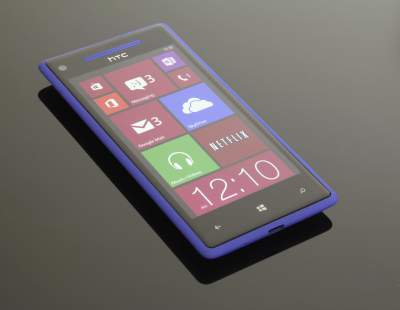By Chris St. Hilaire, cofounder and CEO of MFour Mobile Research, Inc.
The window is closing on consumer surveys fielded online to personal computers, but a new era for market research is opening wide on smartphones.
The evidence is in the numbers for anyone in the industry who’s willing to see.
- As of late 2014, 15% of Americans 18-29 had cut the PC cord entirely and were “heavily dependent” on mobile alone for Internet access.
- Ownership of laptop or desktop computers is slumping, from 80% of U.S. adults in 2012 to 73% in 2015 – the lowest market saturation for PCs since before the Great Recession.
If these statistics compiled by the Pew Research Center don’t convince you that the PC’s sun is setting, how about Intel’s recent announcement that it’s de-emphasizing the memory chips for PCs that made it a corporate giant? The company that literally knows PCs from the inside realizes that the future lies elsewhere – with mobile devices and the cloud, not laptops and desktops.
Intel announced its shift on April 19, a day after my company debuted MFourDIY, the nation’s first do-it yourself survey platform designed strictly for smartphones.
Mobile DIY will usher many more researchers into mobile by making it fast, easy and cost effective to create sophisticated mobile surveys with the simple-to-use tools now available. Adopters will harness the vast capabilities of smartphones as transmitters of survey data that’s instant and reliable. In a nutshell, 2016 is a 1776 moment for this industry – a revolutionary moment that marks the democratization of mobile market research.
The American Revolution unshackled a new country from an outmoded form of government. The mobile revolution will unshackle market research from the demographic and technological constraints of the outmoded online studies that are choking off access to fast, accurate and representative data. Taxation without representation was wrong in the 1770s. Claiming today that online market research data is representative and accurate when it can’t reach vital, rising consumer demographics such as Hispanics and the Millennials who practically live on their smartphones – that’ not only wrong, but a deluded blueprint for failure.
MFour’s sole business since 2011 has been developing a self-contained all-mobile strategy. That has meant addressing both ends of the research equation: creating survey software that taps into the vast computing power and multimedia capacities of today’s smartphones, and developing a demographically diverse panel whose members stay engaged because display and performance are tailored to the devices that have become a fifth appendage.
An all-mobile approach that uses the best technology and best practices can revitalize the survey-fielding process at every step, from panel recruitment to data return.
Recruitment becomes fast and efficient. With all-mobile, panelists get a “push” alert – a text message that there’s a survey to take. This solves an inherent problem of online surveys’ standard email notification – they’re very easy to miss or ignore. For recruiting Millennials, who opt for texting over email, the gap in effectiveness between texted pushes and email notifications becomes even greater.
A common misconception about mobile surveys is that they’re easily dropped when the respondent can’t get a good enough signal to speed the survey along, or can’t access WiFi.
With state-of-the-art mobile research there’s no such issue. Panelists sign up for surveys by downloading a “native” app that loads the entire sequence of questions instantly into their phones – including pictures and audio/video content. This allows respondents to answer while they are off-line – no signal or WiFi needed, and no frustration from slow loading or dropped Internet connections that can turn non-native mobile survey-taking into frustration. With a native app there’s also no longer a need to restrict LOI to five minutes on mobile because of connection issues.
Submitting the completed survey is also instantaneous; less advanced mobile technologies require a separate, one-at-a-time online interchange and load-in for each question and answer. Again, that leaves the lesser mobile approaches vulnerable to poor signal quality leading to slowness, frustration, and drops short of completion. But remember -- this is not where mobile’s capability is really at.
Mobile also puts smartphones’ geolocation and multimedia features at a researcher’s disposal. First pinpoint panel members at locations that are relevant to a study, such as a retail chain store or a cinema. Then field a survey on the spot, or soon after respondents have left. The result is vivid, quick responses, generating data that won’t be skewed by faulty recall.
Multimedia components in mobile surveys dovetail with smartphone users’ delight in their devices’ cameras and audio-video recording and playback functions. They’re perfectly willing to receive questions based on pictures or clips sent to their phones with survey questions – or to create and submit their own multimedia content to enhance an answer.
\To sum up, all-mobile surveys give market research a new, two-way street to success. For respondents the experience is easier, more flexible, more engaging. For researchers, mobile drives faster, more efficient access to more reliable data, and opens new avenues into consumers’ in-the-moment thoughts and emotions.
This is how the world is moving. It’s movement in a direction that could revitalize market research -- if only market research would move with it.
This commentary first appeared in RW Connect.
 MFour Mobile Research is pleased to have added Daniel Baker to its operations team as a Project Manager.
MFour Mobile Research is pleased to have added Daniel Baker to its operations team as a Project Manager.




